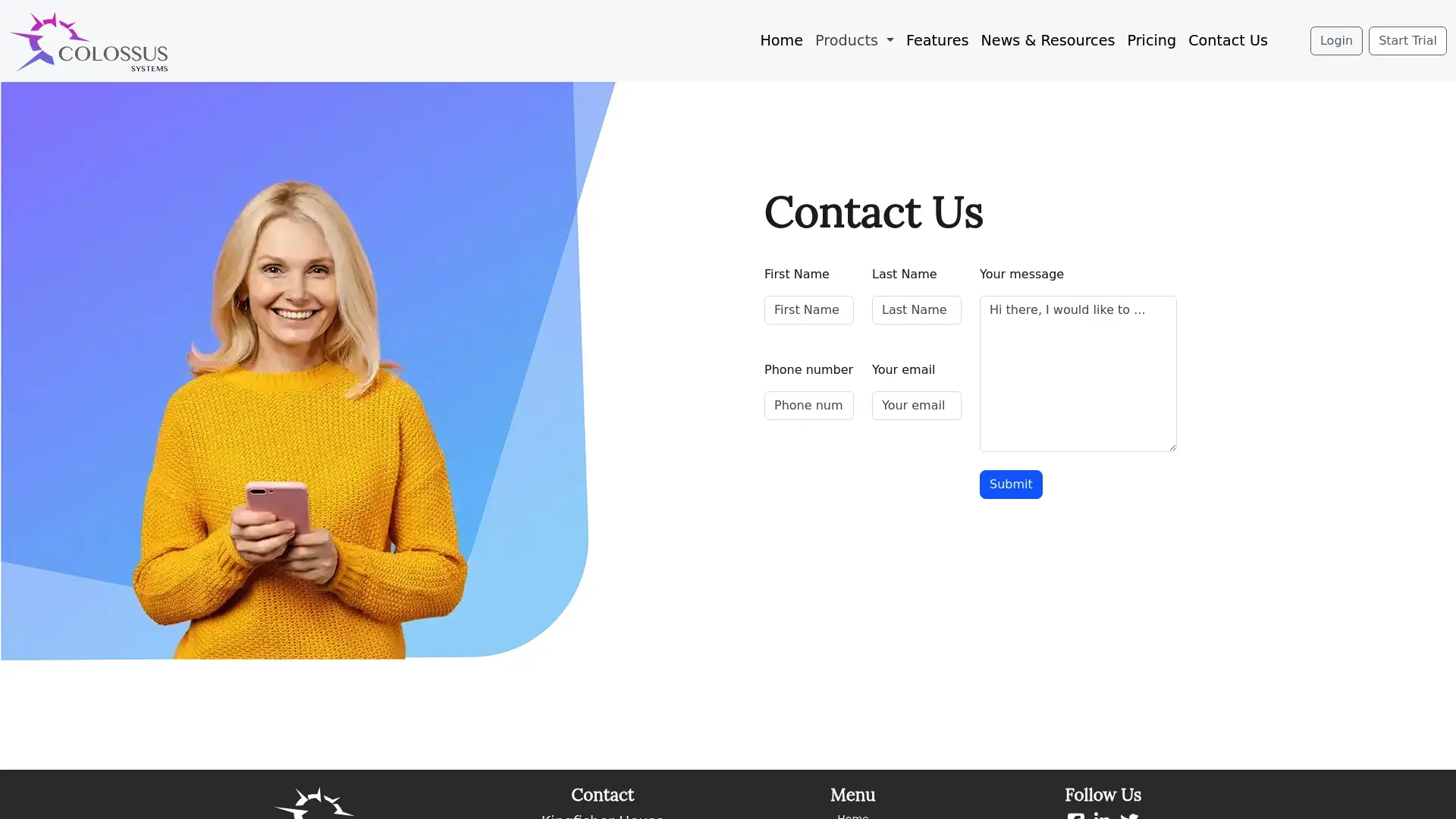Leveraging Social Media for Membership Growth and Engagement

Membership organisations pour hours into managing social media, hoping for stronger connections and steady growth. Yet only a clear set of social media objectives and focused platforms can increase member engagement by up to 25 percent in just six months. Most never realise that trying to be everywhere at once does more harm than good. Turning your strategy around starts by doing less, but with much more purpose.
Table of Contents
- Step 1: Define Your Social Media Objectives
- Step 2: Identify Your Target Audience
- Step 3: Choose The Right Social Media Platforms
- Step 4: Develop A Content Strategy
- Step 5: Implement And Monitor Engagement
- Step 6: Evaluate And Adjust Your Strategy
Quick Summary
| Key Point | Explanation |
|---|---|
| 1. Define clear social media objectives | Set specific goals aligned with your organisational mission to guide your social media strategy effectively. |
| 2. Identify and understand your target audience | Create detailed audience profiles to tailor content that meets member motivations and engagement triggers. |
| 3. Select the right social media platforms | Choose platforms that align with your audience’s preferences, focusing on 2-3 for better content quality. |
| 4. Develop a versatile content strategy | Create a dynamic content calendar that includes diverse formats to maintain audience interest and engagement. |
| 5. Continuously evaluate and adjust your strategy | Regularly assess your performance metrics to pivot your approach, enhancing engagement and membership growth. |
Step 1: Define Your Social Media Objectives
Defining clear social media objectives is the foundation of a successful membership engagement strategy. Without precise goals, your social media efforts will lack direction and struggle to produce meaningful results. Your objectives must align closely with your organisation’s broader mission and membership growth targets.
Start by conducting a comprehensive assessment of your current membership landscape. Examine your existing communication channels, membership demographics, and engagement patterns. This initial analysis will help you understand where social media can bridge communication gaps and create more compelling connection points. Strategic objectives might include increasing membership sign-ups, improving member retention, enhancing community interaction, or raising organisational visibility.
Consider developing specific, measurable goals that translate into actionable social media strategies. For instance, rather than a vague aim like “grow our audience,” establish concrete targets such as “increase member engagement by 25% within six months” or “generate 50 new membership inquiries through targeted social media campaigns.” These precise objectives will guide your content creation, platform selection, and performance tracking.
Your social media objectives should also reflect the unique characteristics of your membership community. Professional associations might prioritise networking opportunities, while educational organisations may focus on knowledge sharing and professional development content. Learn more about effective community engagement strategies to refine your approach and create meaningful digital interactions.
Recommended verification methods for successfully completing this step include:
- Documented list of 3-5 specific, measurable social media objectives
- Clear alignment between objectives and organisational mission
- Identified key performance indicators (KPIs) for tracking progress
By meticulously defining your social media objectives, you create a strategic roadmap that transforms digital platforms from mere communication tools into powerful membership growth engines.
Step 2: Identify Your Target Audience
Identifying your target audience is a critical step in crafting an effective social media strategy for membership growth. This process goes beyond basic demographic information, requiring a deep understanding of your potential members’ motivations, challenges, and digital behaviours. Your goal is to create a comprehensive audience profile that reveals not just who they are, but what drives their engagement and decision-making.
Begin by gathering existing data from your current membership base. Analyse membership records, survey responses, and interaction histories to uncover patterns and characteristics. Look beyond surface-level details like age and profession. Consider factors such as professional aspirations, learning preferences, networking needs, and digital communication habits. This nuanced approach helps you develop targeted content and messaging that resonates deeply with your potential members.
Utilise advanced audience research tools and platforms to refine your understanding. Social media analytics, Google Analytics, and professional networking insights can provide rich information about your audience’s online behaviours. Learn how to segment your audience effectively to create more personalised and impactful communication strategies. Pay attention to the platforms where your potential members are most active, the type of content they engage with, and the times they are most likely to interact online.
Creating detailed audience personas is an essential part of this process. These fictional representations should capture the essence of different member segments, including their professional challenges, career goals, and potential reasons for joining your organisation. Consider developing 3-5 distinct personas that represent the diversity of your potential membership community.
Recommended verification methods for successfully completing this step include:
- Documented audience personas with comprehensive behavioural insights
- Mapped digital platforms and communication preferences
- Clear understanding of audience motivations and engagement triggers
By meticulously identifying your target audience, you transform generic social media efforts into precision-targeted membership growth strategies.
Step 3: Choose the Right Social Media Platforms
Selecting the appropriate social media platforms is a nuanced process that requires careful consideration of your membership organisation’s unique characteristics and target audience. Not all platforms are created equal, and the wrong choice can significantly diminish your engagement and growth potential. Your platform selection should be a strategic decision driven by your audience research and organisational objectives.
Begin by mapping the digital preferences of your target audience. Different professional sectors and age groups gravitate towards specific platforms. LinkedIn typically serves professional associations and career-focused communities, while Facebook offers broader demographic reach. Instagram and Twitter can be powerful for organisations targeting younger professionals or those seeking dynamic, real-time content. Consider the primary communication style, content format, and interaction patterns of each platform in relation to your membership goals.
Carefully evaluate the strengths and limitations of each potential platform. Some platforms excel at visual storytelling, while others are better for long-form content or professional networking. Explore targeted communication strategies to ensure your chosen platforms align with your content strategy. Assess the platform’s user demographics, engagement metrics, and advertising capabilities. A platform with robust analytics and targeting options can provide deeper insights into your membership acquisition efforts.
Resource allocation is another critical consideration. Each platform requires consistent content creation, community management, and engagement strategies. Resist the temptation to maintain a presence on every available platform. Instead, focus on 2-3 platforms where you can consistently deliver high-quality, relevant content that resonates with your target audience. Quality and consistency matter far more than widespread but superficial presence.
Below is a comparison of popular social media platforms, highlighting their primary strengths, typical audiences, and suitable content formats for membership organisations.
| Platform | Main Strength | Typical Audience | Suitable Content Formats |
|---|---|---|---|
| Professional networking | Career-focused individuals | Articles, industry news, events | |
| Broad demographic reach | General public, varied ages | Announcements, groups, events | |
| Visual storytelling | Younger professionals | Images, videos, stories | |
| Real-time updates, dialogue | Professionals, media | Short posts, live chats, polls |
Recommended verification methods for successfully completing this step include:
- Documented platform selection rationale
- Matching of platform capabilities with organisational objectives
- Clear content strategy for each selected platform
By strategically choosing social media platforms, you create targeted channels for meaningful member engagement and growth.

Step 4: Develop a Content Strategy
Developing a robust content strategy is the cornerstone of successful social media membership engagement. Your content must transcend mere information sharing, transforming into a powerful tool for building community, demonstrating value, and driving membership growth. The most effective content strategies are those that seamlessly blend organisational objectives with audience interests and preferences.
Begin by creating a comprehensive content framework that addresses different stages of member interaction. Your content should serve multiple purposes: attracting potential members, nurturing existing relationships, and providing ongoing value to your community. Consider developing content that spans educational resources, industry insights, member success stories, professional development opportunities, and behind-the-scenes glimpses of your organisation’s impact. This diverse approach ensures your social media presence remains dynamic and engaging.
Establish a consistent content calendar that balances frequency, quality, and variety. Aim to create a predictable yet flexible posting schedule that keeps your audience anticipating and returning to your content. Explore advanced techniques for targeted communication to refine your content distribution strategy. Integrate a mix of content types including written articles, infographics, short videos, podcast snippets, live Q&A sessions, and interactive polls. Each content type should be strategically selected to maximise engagement and align with your platform capabilities.
Prioritise authenticity and value in every piece of content you create. Your social media presence should reflect your organisation’s unique voice and mission, providing genuine insights that distinguish you from generic industry communications. Develop content that answers your members’ most pressing questions, addresses their professional challenges, and demonstrates the tangible benefits of membership.
Recommended verification methods for successfully completing this step include:
- Documented 3-month content calendar with diverse content types
- Clear alignment between content themes and organisational objectives
- Established content creation and approval workflow
By crafting a thoughtful, strategic content approach, you transform social media from a mere communication channel into a powerful membership engagement ecosystem.

Step 5: Implement and Monitor Engagement
Implementing and monitoring engagement is the critical phase where your social media strategy transforms from theoretical planning to practical execution. Your success hinges on creating meaningful interactions that convert passive followers into active, committed members. This step requires a meticulous approach to tracking, responding, and adapting your social media presence in real-time.
Initiate your engagement strategy by establishing a responsive communication framework. Develop clear protocols for addressing comments, messages, and mentions across your chosen platforms. Response time matters significantly in building trust and demonstrating your organisation’s commitment to member interaction. Aim to respond to all queries within 24 hours, with priority handling for direct messages and membership-related inquiries. Discover advanced techniques for building lasting community connections to enhance your interaction strategies.
Utilise advanced analytics tools to gain deep insights into your social media performance. Track key metrics beyond superficial engagement numbers. Focus on meaningful indicators such as comment quality, message sentiment, conversion rates, and the depth of member interactions. Invest time in understanding which content types generate the most meaningful engagement, and be prepared to pivot your strategy based on these insights. Pay close attention to the nuanced signals that indicate genuine member interest and potential recruitment opportunities.
Create a dynamic feedback loop that allows continuous improvement of your social media approach. Regularly conduct informal surveys, engage in direct conversations with members, and remain open to constructive criticism. Your willingness to adapt and respond to member needs will set you apart from static, unresponsive organisations. Develop a culture of active listening where every interaction is an opportunity to refine your membership value proposition.
Recommended verification methods for successfully completing this step include:
- Documented engagement response protocols
- Comprehensive analytics tracking dashboard
- Regular monthly review of engagement performance metrics
By implementing a robust, responsive engagement strategy, you transform social media from a broadcasting platform into a dynamic community-building ecosystem.
Step 6: Evaluate and Adjust Your Strategy
Evaluating and adjusting your social media strategy is not a one-time event but a continuous process of refinement and adaptation. Successful membership growth requires a dynamic approach that responds to changing audience behaviours and organisational objectives. This step transforms your social media efforts from a static campaign into an agile, responsive engagement mechanism.
Commence your evaluation by conducting a comprehensive performance audit across all selected platforms. Analyse key performance indicators that go beyond surface-level metrics like follower count. Dive deep into engagement rates, conversion metrics, content performance, and the quality of member interactions. Look for patterns that reveal which types of content resonate most with your audience, the optimal posting times, and the communication styles that generate the most meaningful responses. Learn more about implementing effective training and adaptation strategies to ensure your team remains responsive and adaptive.
Develop a structured quarterly review process that allows for strategic pivots based on your findings. Create a data-driven decision-making framework that balances quantitative metrics with qualitative insights. This might involve conducting member surveys, hosting focus groups, or performing detailed content analysis. Be prepared to make bold adjustments to your content strategy, platform selection, or engagement approach based on these insights. Remember that flexibility is key to maintaining relevance in the rapidly evolving digital landscape.
Establish a culture of continuous learning within your organisation. Encourage team members to share observations, experiment with new content formats, and challenge existing assumptions about member engagement. Implement a regular knowledge-sharing process where insights from social media interactions are discussed and integrated into broader organisational strategies. This approach ensures that your social media efforts remain aligned with your membership growth objectives.
Recommended verification methods for successfully completing this step include:
- Documented quarterly performance review report
- Evidence of strategic adjustments based on data insights
- Clear tracking of improvement metrics across platforms
By embracing a continuous evaluation and adjustment approach, you transform your social media strategy from a static plan into a dynamic, responsive membership growth engine.
Below is a checklist summarising key verification steps for each main stage in your social media membership growth strategy, ensuring crucial elements are addressed throughout the process.
| Step | Verification Criteria |
|---|---|
| Define Objectives | List of 3-5 measurable objectives; mission alignment; KPIs |
| Identify Target Audience | Detailed personas; communication map; motivations documented |
| Platform Selection | Documented rationale; capabilities match; clear content strategies |
| Develop Content Strategy | 3-month content calendar; theme alignment; workflow established |
| Implement & Monitor Engagement | Response protocols; analytics dashboard; monthly reviews |
| Evaluate & Adjust Strategy | Quarterly reports; evidence of strategic shifts; improvement tracking |
Turn Your Social Media Strategy Into Real Membership Growth
You have read how clear objectives, tailored audience research, and targeted platforms are vital for engaging your membership community through social media. Yet, the real challenge often lies in transforming this planning into measurable growth. Many organisations struggle to bridge the gap between creative digital strategies and actual results, facing issues like low sign-up conversions, disjointed event promotion, or ineffective campaign tracking. A lack of integration between your engagement tools, event management, and member communications can easily stall progress and dilute your impact.

Discover how Colossus Systems can streamline your entire approach. Our unified platform empowers membership-based organisations to seamlessly manage everything from event registrations to virtual training and targeted marketing campaigns. With advanced analytics, customisable communication tools, and integrated CRM features, you can finally connect your social engagement efforts with real growth outcomes.
Ready to accelerate member sign-ups, boost retention, and engage your audience at every step? Contact our team today to discuss a solution tailored to your organisation’s needs. Do not let missed opportunities hold you back when a comprehensive digital platform is only a conversation away.
Frequently Asked Questions
What are the first steps to take for engaging members through social media?
To start engaging members via social media, first define clear social media objectives that align with your organisational mission. Conduct an assessment of your current membership landscape to identify communication gaps and opportunities.
How can I identify my target audience on social media?
Identifying your target audience involves gathering data about your current membership base and analyzing their motivations, challenges, and digital behaviours. Use tools like social media analytics and surveys to create detailed audience personas that reflect your potential members.
What should I consider when choosing social media platforms for membership growth?
When selecting social media platforms, consider your audience’s digital preferences, the strengths of each platform, and your resource allocation. Focus on 2-3 platforms that align with your content strategy and where you can maintain consistent, high-quality engagement.
How do I know if my social media strategy is effective?
Evaluating your social media strategy involves conducting a performance audit using key metrics such as engagement rates and conversion metrics. Establish a quarterly review process to assess the effectiveness of your content and adjust your strategy based on data insights.
Recommended
- Event Marketing Ideas for Membership Groups | Colossus Systems
- Understanding Digital Marketing for Associations | Colossus Systems
- Improving Member Engagement: Proven Strategies for 2025|CS
- Email Marketing for Associations: Effective Strategies and Tips|CS
- Creating Shareable Content: Boost Engagement and Reach